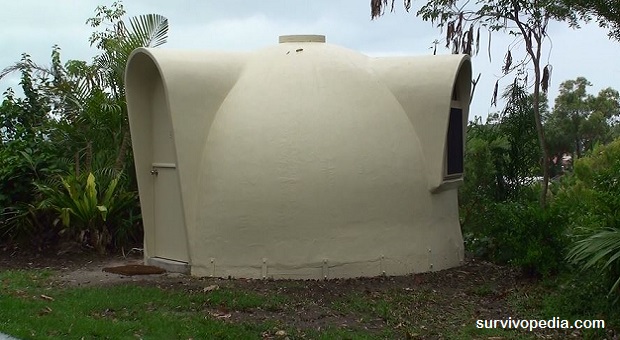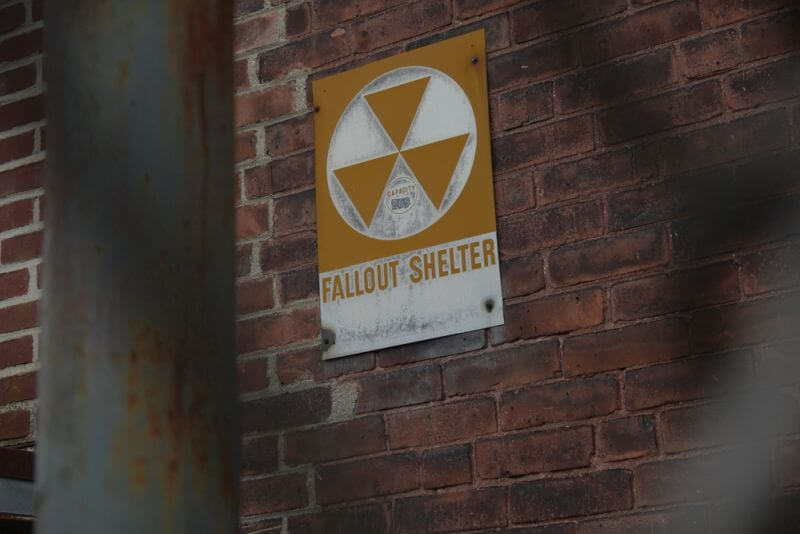Do you remember when people were stuck in the Superdome during Hurricane Katrina?
Aside from problems with waste disposal, there were also many people that developed severe psychological problems because too many people were packed in together.
This is one very good example of what shelter means for your survival, right? But this is not enough: clothing and bedding meet the most personal needs for shelter from the climate, so we have to take them into account as well while prepping.
Do You Have Enough Space?
No matter whether you are claustrophobic or not, you need to determine how much room each person in your survival group needs in order to remain healthy at all levels. Since a disaster can lead to years of social disruption, do not be misled into thinking that you can pack everyone into a small space and hope for the best.
As with food and water ratios, you can use online calculators and estimators to find out much room each person will need. And remember that almost all situations will require increased living space in order to deal with a different range of stresses.
There is no question that mp3 players, tablets, and cell phones can ease some of the stress caused by living in extremely close quarters. When all of these devices become inoperable, there may be people in your survival group that will require more living space than they do now. As a result, when you are planning out your homestead, it makes sense to create multiple shelters as well as look for other ways to help people have more space.
If you are paying for room in a survival community, it is very important to find out how much shelter space is allocated for each person. You should also find out if people will be crammed together in emergencies as well as what kind of support system is in place to help people adjust to the post crisis world. Never forget that the images we have of social collapse survivors are largely ones painted by movies and TV.
There is no telling precisely who will survive or why. No matter how each person may try to prepare, the elements of luck and chance may still allow someone who will break under pressure into a survival community. Under those situations, shelter arrangements can easily become a serious problem.
In order to prepare for this issue, you should at least know how to build your own temporary and permanent shelters away from the main group. There should also be clear understandings between you and community leaders about your capacity to move into a different region based on your own needs and preferences.
Today, many people will tell you that their home or apartment is way too small for comfort. These people will escape to stores, supermarkets, or the woods just to get away from those stifling walls, hated furniture, and other knaggy issues.
While you may find yourself thankful for what you have during and after a crisis, that does not change the fact that being cut off from the world in terms of communications and electronics devices can make the situation much worse.
If possible, try to find some way to increase your living space now, getting rid of unwanted furniture and reducing clutter. Invariably, the more comfortable you are living in your bug in location, the better chance you will have of making good use of the available space. For example, if you have an entire room cleaned out and empty, you can use it for purifying water or engaging in other activities related to survival needs.
What About Clothing?
No matter whether you are bugging out or bugging in, you will need to have some different kinds of garments on hand. While the clothes you are wearing or have stored in your closet won’t be damaged by an EMP, you will still need a range of garments and protective gear in order to survive with as little injury as possible.
Here are some critical things that you should have on hand if you are planning to survive a major social collapse.
Hiking Boots
Hiking boots that will keep your feet cool in hot weather and warm in cold weather. If you cannot find one pair of boots to achieve both objectives, then purchase two different pair of boots. Do not try to compromise and purchase a “mid-range” boot. Typically, this will only create a situation where you aren’t prepared for either extreme.
Even though you may feel that you know your geographic region and its temperatures, never forget that you may be forced to move a fairly large distance or face severe weather conditions that weren’t accounted for in your original plans.
Thinsulate and Heavy Socks
You can use thermal and cooling Thinsulate socks to help regulate the temperature of your feet. It is also very important to keep heavier socks available in case you need additional padding.
When choosing the best socks, do not forget to take into account how much circulation the socks will cut off around the ankles and calves. If you choose long socks, always bear in mind that they can become very restrictive and troublesome. At the very least, keep a few pairs of ankle and even heel length socks available.
Nylon Based Overshirts and Pants
You can find good quality, durable nylon garments in most sporting goods stores. These clothes will help you stay warm in cold weather or help move heat away from your body faster during summer months or other conditions where it will be harder to cool off.
Sufficient clothing to create layers. If you cannot afford good quality nylon garments, then use layers to help stay warmer or cooler. Just remember that black garments will absorb heat while white and light colors will reflect it away from you.
Protective Eyewear
No matter whether you have to move through the streets or plan to stay in one building, a massive EMP can generate all kinds of fires and other hazards. These in turn, will emit all kinds of smoke, silt, and dust that can easily get into your eyes. In addition, if a window breaks, a tree falls, or some other debris comes your way, protective eyewear can help save your eyes.
You should choose good quality goggles as opposed to glasses. While goggles may not be very attractive, they will still protect your eyes from a range of injuries.
You can purchase high quality goggles at just about any hardware store. Make sure you choose a pair that will protect your eyes from dust as well as objects flying at your face.
Together with goggles, you may also want to consider purchasing a welding helmet. This type of helmet comes with a shield that will protect your eyes from excessive heat and light. While they may not be very useful during night hours, they can reduce the chances of you being driven blind by any number of light and heat sources during the day hours.
Since night vision goggles rely on IC chips, it does not make much sense to keep them on hand. Rather, you are better off honing your natural eyesight and learning how to preserve it during dark hours.
For example, instead of relying on a flashlight, learn how to use the ambient light to meet your needs. While you may not be aware of it, even looking at a bright light for less than second can rob you of vital night vision for at least 10 – 15 minutes.
Protective Ear Muffs
Chances are you have no idea what it sounds like when a transformer explodes. By the time you take into account these noises, sounds from riots, percussion grenades, LRADS, and other percussion equipment, failure to have protective ear muffs on hand can spell severe injury or even death.
It should be noted that simply wearing ear plugs can be just as dangerous as not wearing ear protection at all. In some cases, shock or percussion blasts can easily push these plugs deeper into the ear canal and even rupture your ear drums. Anyone that wears hearing aids should seriously consider opting for devices that do not lodge in the ear canal.
Heavy Gloves and Hardhats
After an initial EMP, there are bound to be all kinds of explosions and fires that will result in all kinds of debris flying around. Never assume that you will be safe in your apartment or any other place just because you survived the initial blast.
As hours and days go by, debris will continue to build up and may well endanger your life if you do not have a hardhat and gloves to protect your hands as you try to move heavy objects from one place to another.
Waterproof and Chemical Proof Suit
No matter whether you need to get out of a city or a small town, chances are you will encounter raw sewage and many other toxins. If you cannot afford a basic contamination suit, you can try to make your own using vinyl tarp or heavy plastic.
As may be expected, you will need to use epoxy glues instead of a needle and thread to join parts of the suit together. Always be mindful of the fact that even a small hole can let dangerous toxins into the suit.
Overall, most preppers know that a post crisis world is going to be filled with trauma and chaos. In many cases, these people tend to try and hold onto the idea that if they have enough tangible resources to meet daily and long term needs, then they get through the crisis with far less difficulty.
Ease your survival by prepping properly, and finding ways to make your shelter safe and comfortable at the same time.
References:
http://www.engineeringtoolbox.com/number-persons-buildings-d_118.html








































































Draining the water heater is a good idea for water in an emergency. Just be sure to turn off the gas or electricity to the water heater to be sure it doesn’t get heated when there’s not enough water in it. The water heater can be damaged. Even if there’s no electricity or gas at the moment you get water out of it, turn it off anyway, in case the electricity or gas is restored before the water is.